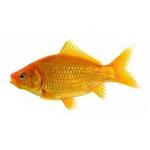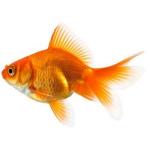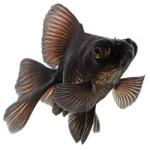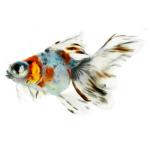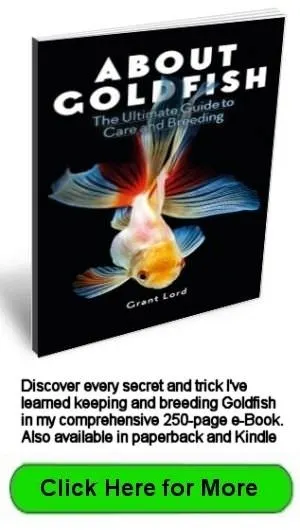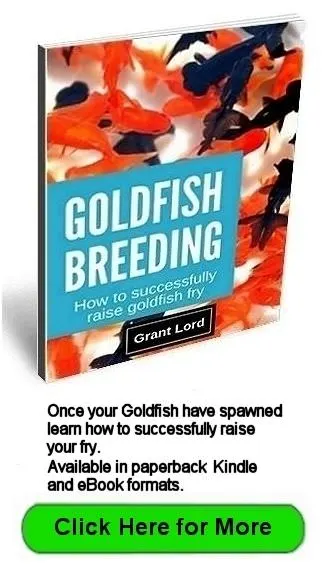- Home
- Varieties
Goldfish Types
Introduction
There are well over 100 known Goldfish types.
We will concentrate on the more common Goldfish types available, as some varieties recognized in China or Japan are rarely seen outside their respective countries.
This page gives an overview of the 6 major physical attributes that distinguish one Goldfish variety from another, with the most developed varieties having the largest combination.
Click on the links below for more detailed information on each Goldfish type.
Major Physical Attributes of Goldfish
The major physical attributes a Goldfish can have are:
- Scale type
- Fin variations
- Eye variation
- Body shape
- Wen (cuticular tissue covering the head) and
- Narial bouquet (pom pom like extensions to the nostrils).
Within the major physical attributes, there can be several variations. An example of this is fish with single tail fins. They can be:
- Short
- Long
- Pointed or
- Rounded at the ends.
Some of these variations are a requirement for a particular variety. For instance, a Comet Goldfish should have a tail as long as its body with pointed ends.
Scale Types
Metallic scales. Goldfish with this scale type have a shiny metallic appearance, hence the description. They can be a single color or have two, with one of the colors being white.
Any black coloration found on a metallic Goldfish will be because of injury, or it has not yet finished changing color. Black Moor Goldfish are one exception to this rule. Many more varieties are being developed with black coloration.
The majority of Goldfish sold are metallic scaled.
Nacreous (calico) scales. These fish lack the shine of the metallic fish. The scales are missing the top layer of pigment, so they are semi-transparent. Fish in this scale type usually have mottled coloring made up of several colors, such as red, black, blue, white, and every color in between.
Nacreous Goldfish often have a few scattered metallic scales or metallic gill plates. These are not desirable on show quality fish.
Matt scales. Fish with matt scales have fully transparent scales. These fish display minimal color or none at all and appear pink.
More about scale types and latest developments here...
Fin Variations
There are only two significant tail fin variations, single and twin.
Within these two types, tail fins can be long, short, pointed, or rounded at the ends, forked, or have no fork at all, depending on the Goldfish type. The rest of the finnage generally follows the tail fin form.
Single-tailed varieties include the Common, Comet, Bristol, and London Shubunkins.
All other fancy varieties should have two tail fins (and two anal fins on the better specimens).
Sometimes single-tailed fancy Goldfish are called nymphs, but they are only poor specimens that shouldn’t have made it past the first cull.
The one exception to this is the Tamasaba variety, which looks like a hump-backed Ryukin but has a long, single tail.
The only other significant fin variation is Goldfish varieties with a missing dorsal fin. These varieties include the Celestial, Water Bubble Eye, Ranchu, Pompom, and Lionhead. These Goldfish are some of the most highly developed.
Eye Variations
Goldfish have four eye variations:
- Normal eyed
- Telescopic-eyed as seen on Black or Red Moors
- Upturned-eyes as seen on Celestials and
- Water bubble eyes as seen on Water Bubble Eye Goldfish. The eye is normal, but a fluid-filled sac grows underneath the eyes, pushing them upwards.
Body Shape Variations
There are three body shapes:
- Long and slender, similar to the wild fish. (These Goldfish types always have a single tail fin)
- Short and round. (These Goldfish should always have twin tail fins and a dorsal, the exception being the Tamasaba variety)
- Medium short with dorsal absent. (These Goldfish should always have twin tail fins).
Overview of Goldfish Types
All Goldfish varieties started with the Prussian carp, which was selectively bred for color variation. The Common Goldfish was the first Goldfish variety developed.
For an overview of the most common Goldfish varieties available, I have grouped them by their major physical characteristic; for example, all single-tailed Goldfish are in the same group.
At the top of each list are the least developed Goldfish, moving down to the most developed at the bottom. Click on each link to be taken to a detailed page on the type.
Single Tail Fin Varieties
The Comet is the most popular variety of this group and sold in the greatest numbers of any Goldfish variety in the world. The exception to this popularity is in Japan and China, where the Wakin is the most popular variety.
Double Tail Fins, Normal Eyed Varieties
The Wakin is sold in large numbers in Asia and is called the common Goldfish.
In the West, the Ryukin or Japanese Fantail is very popular with its long-flowing fins, particularly the hump-backed variety.
Telescopic Eyed Varieties
The Black Moor is the most popular fancy variety sold worldwide.
Red Moor (includes calico moors)
Varieties Without Dorsal Fins
The Ranchu is the most popular Goldfish type of this group.
The Ranchu is very popular in Japan and is considered the king of all Goldfish varieties because of the difficulties this variety presents to breeders. Fish with all the required attributes are very hard to produce, rare, and highly valued.
Celestials and Water Bubble Eyes are often undervalued in pet stores despite being challenging to produce due to their lack of popularity.
Conclusion
There are many different varieties of Goldfish to choose from for enthusiasts, but although they are all Goldfish, their physical characteristics and care requirements can differ significantly between each type.
For detailed information about what characteristics a Goldfish type should exhibit, go to the Goldfish Standards page, which discusses why there are standards and what they are used for.
